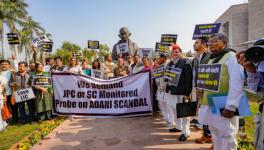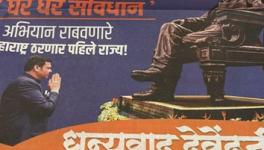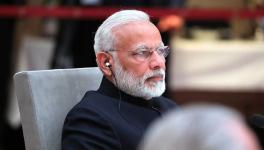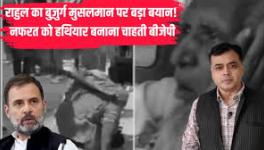The Right Answer to Question Posed By Rahul Gandhi Baiter
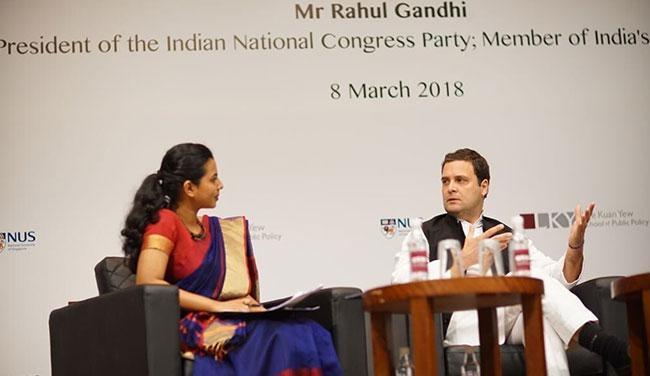
Image Courtesy: NDTV
After declaring himself the author of the “the first comprehensive economic and political history of the whole of Asia”, Prasenjit K. Basu asked Rahul Gandhi in Singapore, "Why is it that during the years that your family ruled in India, India's per capita income was growing less than the world average? And yet, in the years since your family relinquished the Prime-Ministership of India, India's per capita income has grown substantially faster than the world average?"
It is elementary that the growth of the world economy as a whole, the growth of a nation’s economy and the relation between the two depends on a plethora of factors. While economists and historians disagree and debate on which exact set of factors affected a nation’s and world’s economy at a given period in history and how, it is safe to assume that all economists and historians, regardless of which theoretical lens they peer through, unanimously agree that family genetics -- be it that of Nehru or of Lee Kuan Yew -- is not a relevant factor.
It might have been useful to remind Basu that, apart from the growth of ‘per-capita income’, there are also some other figures, which, if he had paid attention to, he may perhaps have asked a more intelligent question. For example, it might have been pertinent to point out that in this period, when the economy grew at what was mockingly called the ‘Hindu rate of growth’, the per capita food grain availability, which was as low as 155 kg soon after Independence, was raised to 177 by the end of 1991.
By 1975, as a result of the productivity enhancing programmes carried out under the Prime Ministership of persons whose family Basu seemed to genetically despise, India became self-sufficient in food-grains, before accumulating, in the next ten years, almost 30 million tonnes of grain in the government’s reserve stock (Henry Bernstein, 1992, 57) -- an achievement that was popularly known as the “Green Revolution”.
However, soon after, when the post-Gandhi Prime Ministership era began -- an era which Basu seemed to have some admiration for -- the food productivity gains made in the previous period was reversed by 100% by 2005 when the per-capita availability of food grains plummeted back to 155 kg, which was higher only to sub-saharan Africa and some Least Developed Countries (LDCs) (Utsa Patnaik, 2005, pg 173).
The percentage of rural households that were undernourished had risen sharply from 48% in 1988-89 to 67% in 2001-02 (Kathy Walker, 2009, Pg 561). According to World Bank’s 2013 report, malnutrition rate among Indian children is twice that in children of sub-Saharan Africa. Only two years ago, in 2016, Prabhat Patnaik pointed out, FAO’s data on per capita food grain absorption indicate that hunger in India was worse than that in Sub-saharan Africa and LDCs.
Here it may be tempting for Basu to point out, had he been looking at figures on poverty instead of per-capita growth, that 56.4% of rural population and 49% of urban population was officially declared to be living below poverty in 1974-75. By 1993-94, the percentage of total population below poverty reduced sharply to 37.3% of the population, before further declining to 27% by 1999-2000.
But yielding to such a temptation would be a mistake, for the fallacy in this method of measuring poverty, using which the Indian government has arrived at these figures, is exposed by Utsa Patnaik (2005, 179-181). The poverty line in 1974-75 was drawn at the expenditure level at which a person could afford a nutritional intake of 2400 Kilo calories, which was the required daily allowance (RDA) of energy as specified by Indian Council of Medical Research. By 1993-94, however, when the figure was reduced to 37.3%, a person on the then poverty-line expenditure could afford 1,970 Kcal of energy, and by 1999-2000, a person on the new poverty-line, below which only 27% of the population remained, could only afford an intake of 1870 Kcal.
Linking the measurement back to the minimum nutritional intake of 2400 Kcal and 2100Kcal to which rural and urban poverty line were originally associated respectively, Utsa Patnaik measured that as on 2005, when a close to double digit growth rate might have sent P.K. Basu in a euphoric delight, 74.5% of the rural population and 44% of the urban population lived below the poverty-line, while official figures, delinked from this nutritional standard, was 27% and 23.5% respectively.
Nevertheless, for Rahul Gandhi to point all this out would have been politically more dangerous than to fumble ill thought out counter-questions as he did. For pointing this out would amount, not to a claim of superiority of the Gandhi family’s gene, but to an admission that the neoliberal reforms, implemented from 1991 by the Congress party under the watchful eye of the then Finance Minister Manmohan Singh -- and whose policies are now being pursued with extra ruthlessness by the present BJP-led NDA government -- have increasingly imposed on the masses of Indian people the most fundamental kind of depravity: hunger.
However, to speak about lack of food grains to those who seem to have the capacity of satisfying their appetites by reading impressive figures of per-capita growth rate may have, in any case, been a futile exercise.
Disclaimer: The views expressed here are the author's personal views, and do not necessarily represent the views of Newsclick.
Get the latest reports & analysis with people's perspective on Protests, movements & deep analytical videos, discussions of the current affairs in your Telegram app. Subscribe to NewsClick's Telegram channel & get Real-Time updates on stories, as they get published on our website.












